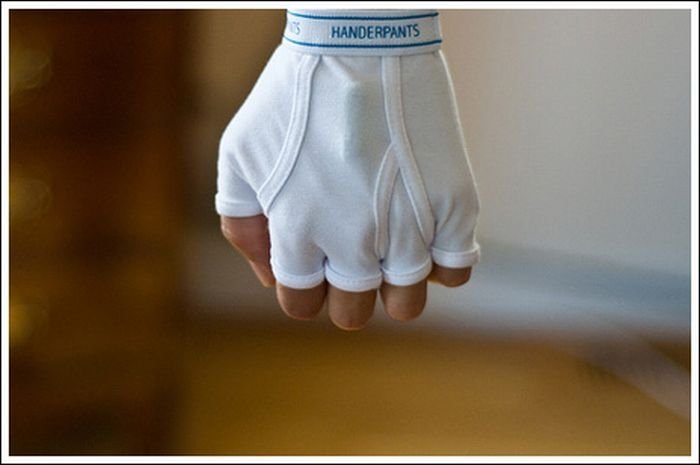|
|
Handerpants, Fingerless Gloves
|
Gloves protect and comfort hands against cold or heat, damage by friction, abrasion or chemicals, and disease; or in turn to provide a guard for what a bare hand should not touch. Latex, nitrile rubber or vinyl disposable gloves are often worn by health care professionals as hygiene and contamination protection measures. Police officers often wear them to work in crime scenes to prevent destroying evidence in the scene. Many criminals wear gloves to avoid leaving fingerprints, which makes the crime investigation more difficult. However, not all gloves prevent fingerprints from being left on the crime scene, depending on the material from which the glove is made.
Fingerless gloves are useful where dexterity is required that gloves would restrict. Cigarette smokers and church organists use fingerless gloves. Some gloves include a gauntlet that extends partway up the arm. Cycling gloves for road racing or touring are usually fingerless, as are sailing gloves.
Gloves are made of materials including cloth, knitted or felted wool, leather, rubber, latex, neoprene, and metal (as in mail). Gloves of kevlar protect the wearer from cuts. Gloves and gauntlets are integral components of pressure suits and spacesuits such as the Apollo/Skylab A7L which went to the moon. Spacesuit gloves combine toughness and environmental protection with a degree of sensitivity and flexibility.
Expensive women's fashion gloves are made in France, Canada and other countries. For cheaper male gloves New York State, especially Gloversville, New York is a center of glove manufacturing. More and more glove manufacturing is being done in East Asia, however.
|
|









